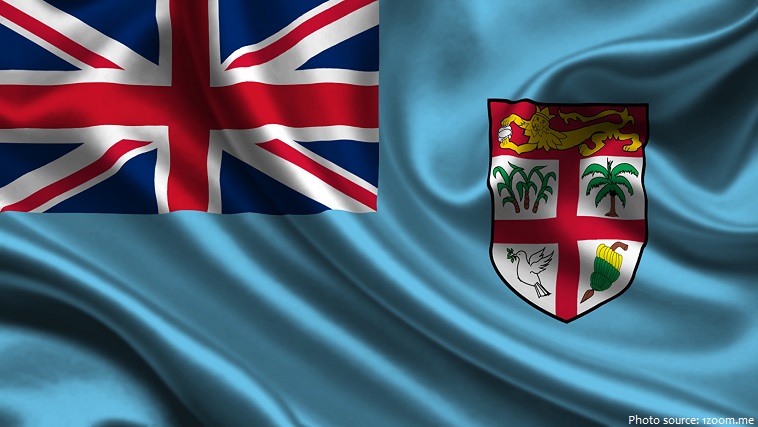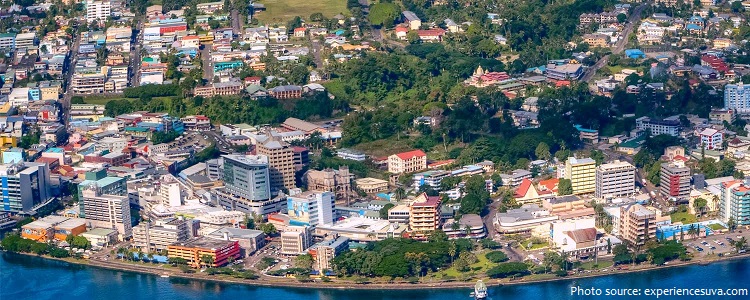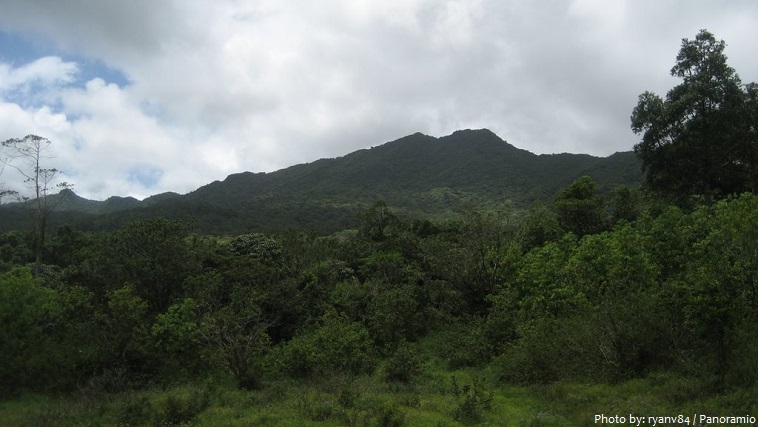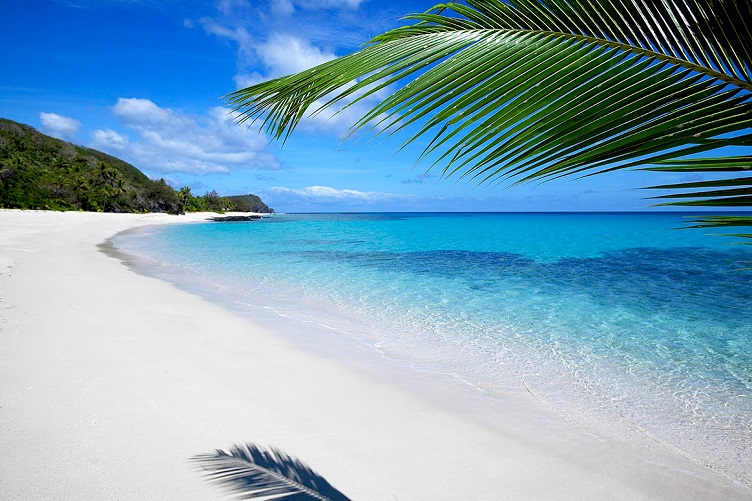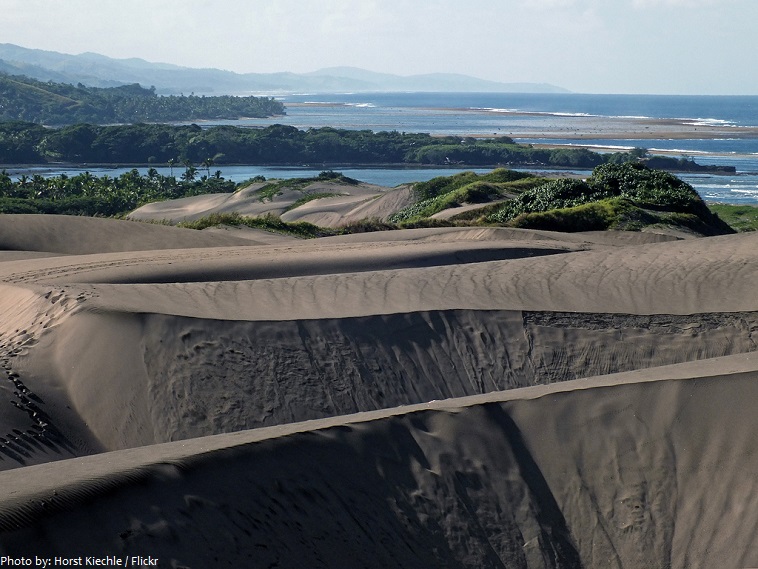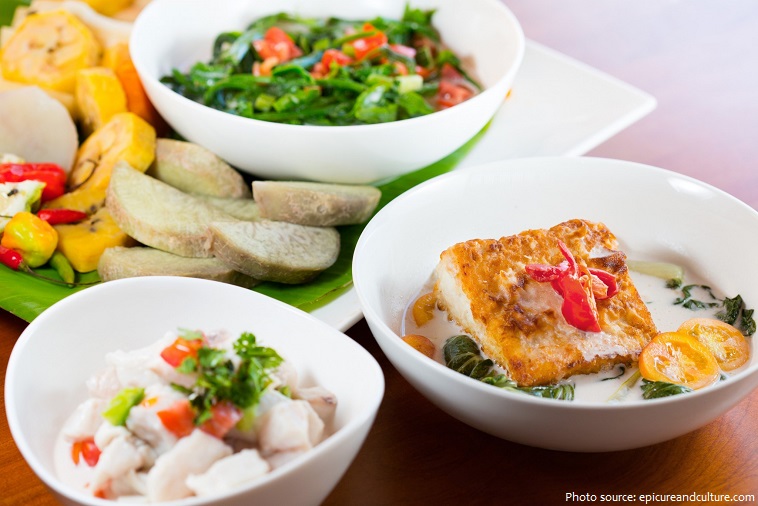Fiji is an island country in Melanesia in the South Pacific Ocean.
The official name of the country is the Republic of Fiji.
Its closest neighbours are Vanuatu to the west, New Caledonia to the southwest, New Zealand‘s Kermadec Islands to the southeast, Tonga to the east, the Samoas and France’s Wallis and Futuna to the northeast, and Tuvalu to the north.
Fiji has three official languages, Fiji, English and Fiji Hindi.
As of 1 January 2017, the population of Fiji was estimated to be 902,400 people.
It is the 151st largest country in the world in terms of area with about 18,300 square kilometers (7,100 square miles).
Fiji is an archipelago of more than 330 islands, of which 110 are permanently inhabited, and more than 500 islets.
Fiji’s two largest islands, Viti Levu and Vanua Levu, make up 87% of Fiji’s total landmass.
Suva is Fiji’s capital, its largest city and one of the most cosmopolitan cities in Oceania. It is located on the southeast coast of the island of Viti Levu.
Most of Fiji’s terrain is mountainous. The majority of these mountains are dormant or extinct volcanoes, though some were also formed from limestone and coral islets.
The highest point in Fiji is Mount Tomanivi, located on the main island of Viti Levu. It rises 1,324 meters (4,344 feet) above sea level.
Fiji has 1,129 kilometers (701 miles) of coastline.
Fiji’s main attractions to tourists are primarily white sandy beaches and aesthetically pleasing islands with all-year-round tropical weather.
Fiji has 50 groups of hot springs and the innermost areas of many islands feature lush rainforests with an abundance of tree species, plants and wildlife.
Fiji has 6 national parks.
The Sigatoka Sand Dunes National Park is Fiji’s first National Park and was established in 1987 to protect a unqiue natural and cutural heritage site. It is located at the mouth of the Sigatoka River on the island of Viti Levu in Fiji. The dunes are the product of erosion in the coastal hinterland and coastal dune forming processes.
Bouma National Heritage Park protects over 80% of Taveuni’s (fifth-largest island in Fiji) total area, covering about 150 square kilometers (57 square miles) of rainforest and coastal forest. The park includes the three Tavoro Waterfalls near the falls’ visitor centre, each with natural swimming pools.
Fiji has 1 UNESCO world heritage site.
Levuka and its low line of buildings set among coconut and mango trees along the beach front was the first colonial capital of Fiji, ceded to the British in 1874. It developed from the early 19th century as a centre of commercial activity by Americans and Europeans who built warehouses, stores, port facilities, residences, and religious, educational and social institutions around the villages of the South Pacific island’s indigenous population. Levuka was designated by UNESCO as a World Heritage Site in 2013.
According to Fijian legend, the great chief Lutunasobasoba led his people across the seas to the new land of Fiji. Most authorities agree that people came into the Pacific from Southeast Asia via the Malay Peninsula. Here the Melanesians and the Polynesians mixed to create a highly developed society long before the arrival of the Europeans.
The European discoveries of the Fiji group were accidental. The first of these discoveries was made in 1643 by the Dutch explorer, Abel Tasman and English navigators, including Captain James Cook who sailed through in 1774, and made further explorations in the 18th century. However, much of the credit of the discovery and recording of the Fiji Islands went to Captain William Bligh, who sailed through Fiji in 1789 after the mutiny on the Bounty, a British Royal Navy ship.
As European populations in Fiji increased, they gained greater influence on Fijian culture as well, and it was during this time that houses and canoes were built, Western-style clothing was first adopted, confederations were formed and wars were fought on a larger scale without precedent but ended more abruptly. Christianity had also spread throughout the islands, and cannibalism, which had once been practiced in Fiji, soon ended.
In 1874, an offer of cession by the Fijian chiefs was accepted, and Fiji was proclaimed a possession and dependency of the British Crown.
Under British rule, Indian servants were brought to Fiji to work in the sugarcane fields. Descendants of these Indian labourers are called Indo-Fijians and currently make up around 40% of the population.
After 96 years as a British colony, Fiji gained independence in 1970.
Fiji has one of the most developed economies in the Pacific due to an abundance of forest, mineral, and fish resources.
Sugar exporting makes up one-third of the country’s industrial activity, and that, along with a growing tourism industry, are Fiji’s major sources of foreign exchange.
Fijian food has traditionally been very healthy. The basic elements of Fijian cooking consists of sweet potatoes, taro (a yam-like root vegetable), rice, cassava, coconut and fish.
Kava or Yaqona is the unofficial national drink of Fiji. It is a mildly narcotic drink made from mixing the powdered root of the pepper plant (piper methysticum) with water and results in a numb feeling around the mouth, lips and tongue and a sense of relaxation.
The climate in Fiji is tropical marine and warm year round with minimal extremes. The warm season is from November to April and the cooler season lasts from May to October. Temperatures in the cool season still average 22 °C (72 °F).
The International Date Line runs through Fiji’s island of Taveuni, but is bent to give uniform time
(UTC+12) to all of the Fiji islands.
The Fijian archipelago is a paradise for bird lovers, who can spend endless hours discovering the 100 plus species of birds that can be found on the islands.
Fiji has 30 species of reptiles, 12 of which are endemic, such as the crested iguana.
There are approximately 250,000 tourists visiting the islands each year.
The country’s currency is the Fijian dollar.
Fiji’s national sport is Rugby.
